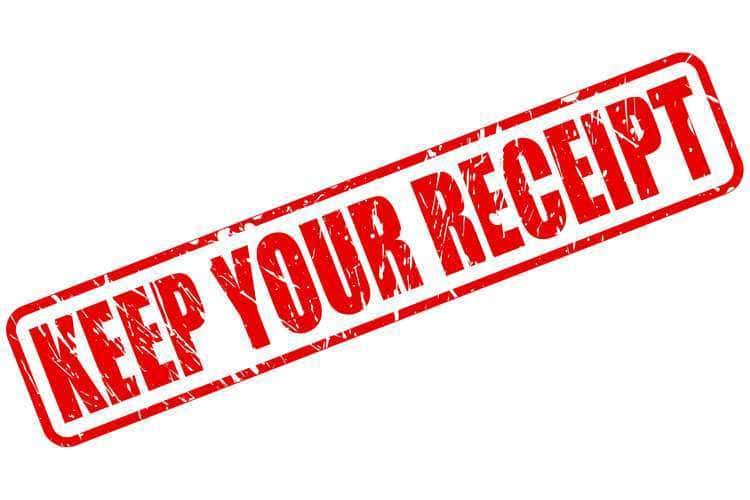-
To Receive Or Not To Receive: Inventory Management and 3-Way Matching
Just about everyone is using purchase orders nowadays. Companies of all sizes find this system is a more straightforward way of managing orders, reviewing purchases, and getting some insight into where their spend is coming from. It makes sense to have a purchase order system for your business.
Implementing a Purchase Order (PO) system is just the beginning though. Orders may be shipped incomplete or arrive with broken pieces. Vendors sometimes also send more than you ordered, which needs to be reconciled so that appropriate payment is made and inventory stays accurate. And sometimes the goods and invoice don’t arrive at the same time, so you need to track those orders and reconcile the differences.
The best solution to these problems is instituting a clear receiving policy. This sort of policy will work hand-in-hand with your purchasing and Accounts Payable (AP) systems, giving you greater insight and control over money going out of the company and goods coming in.

What is Receiving?
Receiving is the process companies use to log which items on a purchase order actually arrived in a delivery. Right after the order arrives, someone like a receiving clerk will do a physical count of the merchandise to verify the quantity and type of product received.
The receiving clerk or an administrator then creates a document verifying the products received. These documents go by many names including receivers, goods receipts, or just receipts. You’ll track goods receipts (GRs) through the system and match them to purchase orders and invoices. That will ensure your company received everything you ordered and give you the documentation needed to request credits from vendors for missing or damaged merchandise.
Should You Always Require Receiving?
There isn’t a one-size-fits-all answer to this question. From an accounting standpoint, consistency in standards is usually preferable to inconsistency. However, there will be times when receiving is irrelevant to the purchase.
Take utility bills for example. Larger companies have been working with utility vendors and managed to get many to include purchase order numbers when they send bills for payment. This can really expedite the payment process compared with waiting for manual approval since any money available on the PO could be used to pay for the utility expense.
In this example, however, there’s no need to complicate the process by adding receiving. Creating a goods receipt for utilities also defeats the purpose of receiving because there’s nothing to reconcile. You’re going to pay your electric bill for the full amount anyway since power companies aren’t known for negotiating or taking returns.
When Do You Need Receiving?
If you have inventory to maintain, using good receipts makes a critical difference. There’s often a huge disconnect between the location that receives materials and the department which pays the invoice. Requiring a GR makes it much easier on the accounting department when they try to make sure they’re paying for what actually arrived at your company. It’s also useful when orders are fulfilled in multiple shipments. Receiving is a way to gradually draw down against a PO to track what has arrived and what hasn’t yet.
In addition, companies who order a lot of food items, like produce, meats, and dairy, should absolutely require receiving on any of these purchases. The vendor can bring a packing slip that shows the whole order fulfilled but upon further review, you might find that part of the order is spoiled, damaged, or otherwise unusable. You’ll need a GR for when you ask the seller for a refund on unusable items. It also functions as a legal document for your records.

How Do Companies Enforce GR Requirements?
It can be tempting to draw a formal line in the sand and say that all purchase orders must go through a receiving process to generate a good receipt. However, this approach doesn’t account for the fast pace of an office environment or other urgent payments. When there is a divide, accounts payable usually maintains responsibility for knowing which POs need receiving.
Every company has different rules but as a general standard, inventory and perishable items always require receiving. Sometimes, blanket purchase orders don’t require receiving but other times they do. When working with exceptions, the process can get convoluted very quickly and be difficult for the AP team to keep up with. If this sounds like your company, it would be a good idea to find an accounts payable workflow tool that automatically differentiates between 2-way and 3-way POs.
What Is 2-Way and 3-Way Matching?
Companies use different matching systems to make sure they receive what they order. With 2-way matching, you’re comparing the invoice received from the vendor with the purchase order your company generated. If they match, then you’re good to go. In this system, you just assume what’s shown on the invoice is what you actually received.
2-way matching works in some cases, but it’s not so good for inventory and perishable items. For those, you’ll want to use 3-way matching. This system matches purchase order, invoice, and goods receipt. All three have to match before the accounts payable department approves payment.
When you’re using AP automation software, you’ll need a system that can tell the difference between different types of invoices and automatically route them for either 2-way or 3-way matching. That will save your accounting department a lot of time and make receiving much easier to implement. And as an added bonus, 3-way matching helps prevent fraud.
What About INR and RNI Challenges?
Another thing that a reliable receiving process is going to help with is the problem of invoices and goods arriving out of sync. Invoice not received (INR) and received not invoiced (RNI) happens when billing and shipping times get a mixed up. In the past, invoices and shipments would arrive around the same time. Not so much now.
INR is becoming more common because email/digital invoices arrive so quickly. There’s a good chance the invoice will arrive quite some time before the goods. It can become a major problem for accounts payable staff who are waiting to approve payment for invoices until the products are received. Automation helps with this problem by keeping track of the invoices until goods show up and you can perform 3-way matching.
RNI presents a similar problem. When goods arrive before the invoice you’ll generate a good receipt, but you can’t yet match that to an invoice. And that means it can’t be recorded as an accounts payable yet. Having a receiving system helps you keep track of these goods until an invoice arrives and you can finish 3-way matching.

How Can You Use POs to Take The First Step?
Before implementing a receiving policy, you’ll want to make sure you get your purchasing system sorted out. For many companies, an online procurement software system is going to be the best choice. It’s organized, flexible, and low-cost. Plus it gives you more direct control over your purchase orders and can communicate with other software.
A usable purchase order system is the first step toward using 3-way matching to manage inventory. And make sure you’re using a procurement and purchase order system that’s compatible with your accounts payable automation. (If you aren’t already using AP automation, now’s the time to get started.) Betting your accounting and purchasing automation software from the same supplier ensures you won’t have to deal with software conflicts. It also makes implementing and learning the new system much easier for your employees.
Why Use AP Automation Software?
For many years, companies employed both 2-way and 3-way matching manually. And because that system worked at one time, some companies are reluctant to switch to using accounts payable automation software. But processing and tracking purchase orders, invoices, and goods receipts gets harder and harder the more your business grows. And in an increasingly digital business world, companies that aren’t using automation software are in danger of falling behind.
There are many reasons to automate accounts payable. AP automation speeds processing, saves your company money, increases security, and reduces clutter, among other things. And if you choose the right kind of accounting automation software, it makes implementing and enforcing a receiving policy much easier. Quality AP software takes the extra work out of 2-way and 3-way matching. You’ll set up custom settings that tell the software how to process different types of invoices. It will also automatically match purchase orders with invoices and, as needed, goods receipts.
Where Do You Start With Receiving?
If you don’t already have a receiving policy in place, start out by deciding which categories of purchases you’ll need goods receipts for. Set up a company policy and work to make it clear and easy to implement for everyone involved.
Receiving can add efficiency to your purchasing, inventory management, and invoice processing. It’s one of the small changes you can make that are key to solving, or preventing, big problems. The cost savings in reconciling incorrect merchandise will make a huge difference in your operation’s accuracy. And on top of that, you’ll also save time in AP processing.
Implementing an automated accounts system and an easy-to-use purchasing before you implement your receiving policy will make the transition a lot easier. If you’re ready to get started with AP automation and purchasing software, contact us today for a free demo.